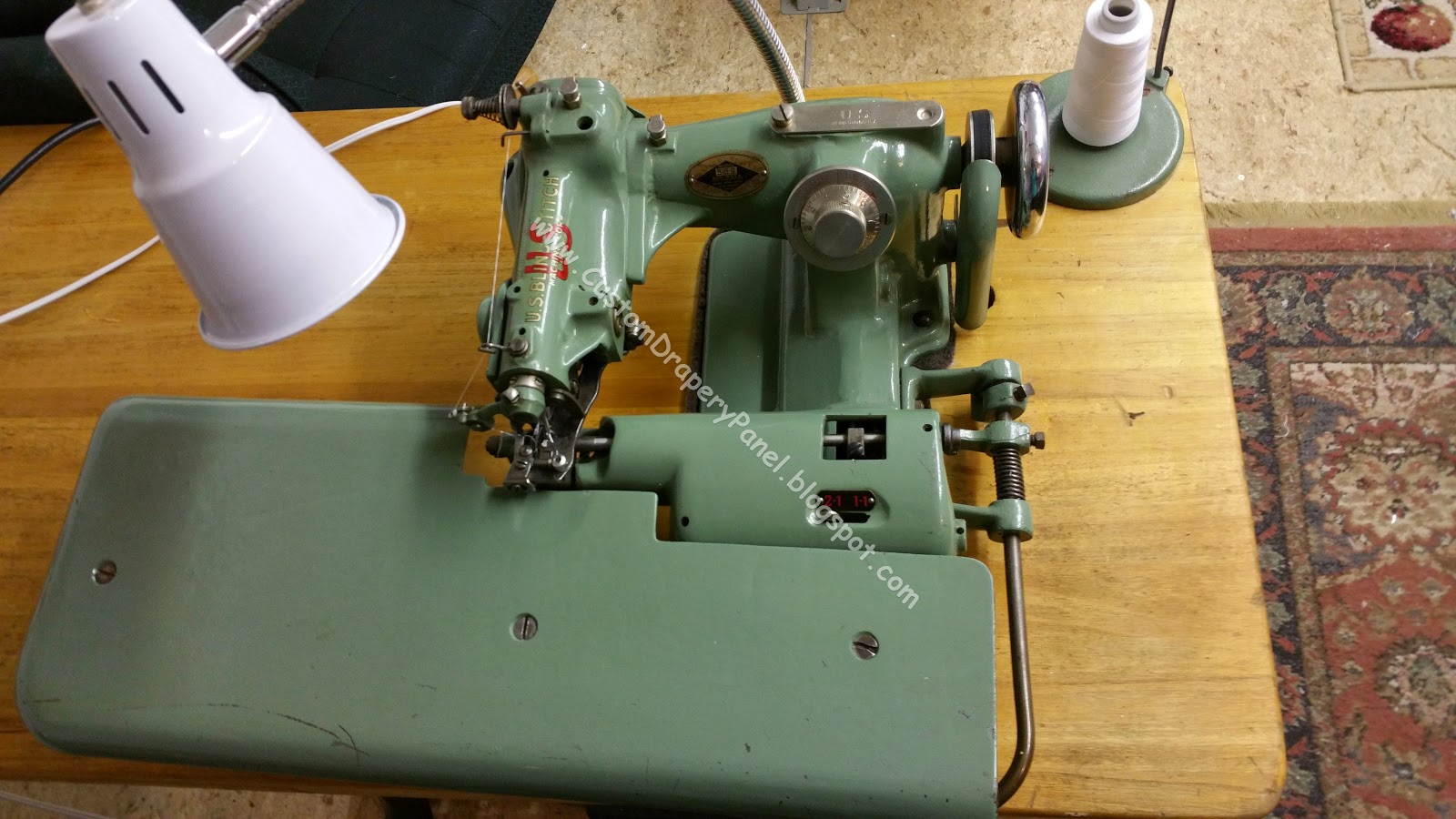This post will focus on these 5 machines:
straight stitch, walking foot, 5 thread serger, blind hemmer and the tacker.
The bulk of daily work is accomplished on the straight stitch machine.
Some call this machine a lock stitch.
The straight stitch currently used in the workroom is manufactured by the Chinese company Yamata. This machine has been very good with no problems using it in the 8 years in use. There are many other machines out there in the industry that are much more expensive than this, but this machine was purchased new and hasn't had problems so far. There are several different needle plates allowing use of large sized needles (up to 21 or 22). Also, useful are various attachments that are available for this machine such as a ruffler, hemmer and binder and miscellaneous feet like welt feet, zipper feet, edge foot etc.
 |
| Chinese made Yamata straight stitch |
 |
| Juki LU-563 Walking Foot Machine |
The video at this link shows a walking foot in action:
The serger is another machine that gets used almost daily. This machine uses 5 strands of thread and it also cuts the edge of the fabric straight and finishes it off with a nice edge stitch. It sews up to 2400 stitches per minute which saves time. It's great for sewing together widths of drapery that are being matched up on a pattern.
 | ||
| Juki 5 thread serger makes a beautiful clean edged stitch |
The 2:1 stitch setting is used doubling the space between stitches versus the 1:1 which is used for garments like hems on pants.
 |
| U.S. Blindstitch machine saves time when a tear out is needed |
Proving to be a real time saver for pleated drapery headers is the tacker machine. This machine can be a bit scary to use the first few times. I wear safety glasses when using it and this really helps with some of the fear! This machine will sew a neat tack very easily through the layers of pleated fabric on a drapery header.
 |
| Singer Tacker machine |
.JPG) |
| A bit messy - sorry! |


.JPG)
.JPG)

.JPG)


.jpg)



.JPG)
.JPG)
.JPG)




































.jpg)


